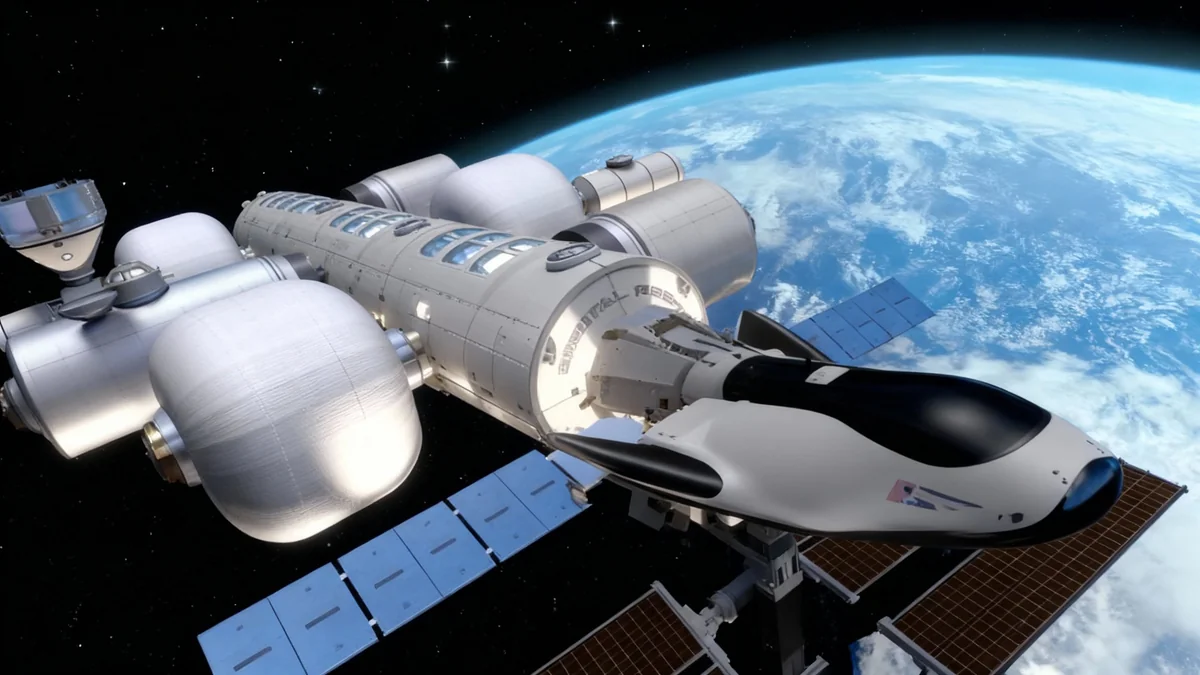Elon Musk's companies, SpaceX and Starlink, have established a commanding position in the global space industry. SpaceX now conducts more rocket launches than all other nations combined, while Starlink operates the world's largest satellite internet constellation, granting Musk significant geopolitical influence.
This dominance extends from commercial satellite deployment to national security launches and even human spaceflight for the United States. The rapid growth and technological advancements of these companies have reshaped the economics of space access and created a deep reliance on Musk's infrastructure by both private entities and governments, including the U.S. military.
Key Takeaways
- Launch Supremacy: SpaceX is responsible for more than half of all global rocket launches, primarily using its reusable Falcon 9 rockets.
- Satellite Network: Starlink operates over 8,000 internet satellites, far surpassing competitors like OneWeb (around 630) and Amazon's Project Kuiper (102).
- Government Reliance: The U.S. government, including NASA and the Pentagon, depends heavily on SpaceX for launching national security payloads and astronauts to the International Space Station.
- Geopolitical Power: Starlink's role in international conflicts, such as in Ukraine and Iran, demonstrates Musk's ability to influence global events by controlling internet access.
- Financial Engine: The Starlink service is a major revenue driver for SpaceX, funding the development of future projects like the Starship rocket.
SpaceX: Redefining Rocket Launches
In the early 2010s, accessing space was an infrequent and costly endeavor for the United States, with fewer than 20 launches per year. The cost to place a kilogram into orbit could exceed $10,000. SpaceX disrupted this model through a combination of engineering innovation and aggressive business tactics.
The company focused on reducing costs with practical solutions, such as using $30 bathroom stall latches instead of $1,500 aerospace-grade equivalents. This approach, combined with the development of the robust Merlin engine, laid the groundwork for its success. According to a former employee, the Merlin engine's strength came from extensive testing rather than a revolutionary design, making it exceptionally reliable.
By the Numbers: SpaceX Launch Cadence
SpaceX's launch frequency has accelerated dramatically. After performing around 30 launches annually, the company increased to over 60 in 2022 and reached 138 launches in the subsequent year. In 2025, the company has averaged nearly one launch every other day.
The Reusability Revolution
A pivotal moment for SpaceX came in 2017 with the successful reuse of its Falcon 9 rocket boosters. This breakthrough dramatically lowered the cost of launches. Today, the Falcon 9 can deliver payloads to low Earth orbit for about one-third of the previous cost, and the more powerful Falcon Heavy reduces that cost by nearly half again. Approximately 85% of Falcon 9 missions now fly with previously used first stages.
This technological lead has left competitors struggling. United Launch Alliance (ULA), a joint venture of Boeing and Lockheed Martin, once held a monopoly on U.S. government launches. SpaceX challenged this dominance through lawsuits and political maneuvering, successfully arguing against ULA's reliance on Russian-made RD-180 engines for its Atlas V rocket.
Starlink: A Constellation of Influence
While rocket launches are the most visible aspect of SpaceX's operations, the Starlink satellite internet service has become its financial backbone and a powerful tool of global influence. Musk has stated that revenue from Starlink is essential for funding his long-term goal of colonizing Mars.
Launched in 2019, Starlink has rapidly expanded to become the world's largest satellite constellation. With more than 8,000 satellites in orbit, it dwarfs its nearest competitors. Eutelsat's OneWeb has about 630 satellites, and Amazon's Project Kuiper, despite significant investment, has only launched 102 of the 1,600 required by its federal license.
The Economics of Satellite Internet
Providing internet from space is not a new idea, but it was historically done with large, expensive satellites in high geostationary orbits. SpaceX's low-cost launches made it economically viable to deploy thousands of smaller satellites in low Earth orbit, offering lower latency and potentially higher speeds. In a recent year, Starlink reportedly accounted for $8 billion of SpaceX's estimated $13 billion in revenue.
A Tool in Global Conflicts
Starlink's strategic importance became clear following Russia's 2022 invasion of Ukraine. The service provided vital communication capabilities for the Ukrainian military. However, this also demonstrated the power vested in a single individual. Musk reportedly made decisions to restrict service in certain areas, affecting military operations and highlighting the risks of relying on a commercial entity for critical infrastructure.
"The US government depends upon him very heavily. You have yoked yourself to a very mercurial personality. Doesn’t that concern you?" - Victoria Samson, Secure World Foundation.
The service has also played a role in other geopolitical hotspots. In Iran, Starlink was activated to provide internet access to dissidents amid government shutdowns. It has also been reportedly used by various groups in Myanmar, the Sahel, and Sudan, often operating outside of official government approval.
The Pentagon's Dependence and the Future of Space Warfare
The United States government, particularly the Department of Defense, has become increasingly reliant on SpaceX. U.S. policy mandates maintaining at least two independent launch providers for national security payloads to avoid a monopoly. However, SpaceX's reliability and cost-effectiveness have led it to secure a majority of these valuable contracts.
In one recent round of awards, SpaceX received seven of nine national security launch contracts, totaling $846 million. This dependence exists even as the Pentagon outlines a new strategy for space as a warfighting domain. A recent military report titled "Space Warfighting" details plans for offensive capabilities, including "orbital strike" actions to disable or destroy adversary satellites.
The "Golden Dome" Initiative
The concept of a space-based missile defense system, reminiscent of the Reagan-era "Star Wars" program, has re-emerged. Dubbed "Golden Dome," the initiative would involve hundreds or even thousands of orbiting sensors and interceptors to protect against ballistic and hypersonic missiles. The estimated cost ranges from $175 billion to over half a trillion dollars.
Building and deploying such a massive constellation would heavily rely on the launch capabilities that SpaceX currently dominates. Reports suggested that SpaceX was a front-runner to build the system, potentially offering it as a "subscription service" where the government would pay for access rather than owning the infrastructure outright. This would grant Musk a theoretical kill switch over a critical component of U.S. national defense.
An Unchallenged Market Position
Despite significant financial backing, potential competitors have yet to mount a serious challenge to SpaceX's position. Jeff Bezos' Blue Origin, founded years before SpaceX, has struggled to bring its large orbital rocket, New Glenn, to operational status. Amazon's Project Kuiper faces a tight deadline to deploy its satellite constellation and relies on other companies, including SpaceX, for launches.
Other companies like Rocket Lab and Firefly are finding success in niche markets for smaller payloads but do not compete directly with the Falcon 9's capabilities. Meanwhile, China's space program, once seen as a primary competitor, has fallen behind SpaceX's launch cadence and payload capacity.
This reality has created a symbiotic, and at times tense, relationship between Musk and the U.S. government. Even amid political disagreements, SpaceX's role has been deemed too vital to U.S. interests to disrupt. The company's technology and infrastructure are now deeply embedded in the commercial, civil, and military space operations of the United States and its allies, solidifying its founder's role as a central figure in 21st-century global power dynamics.




